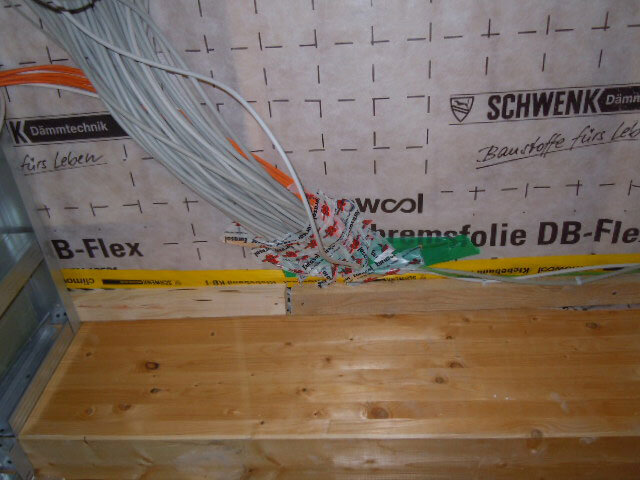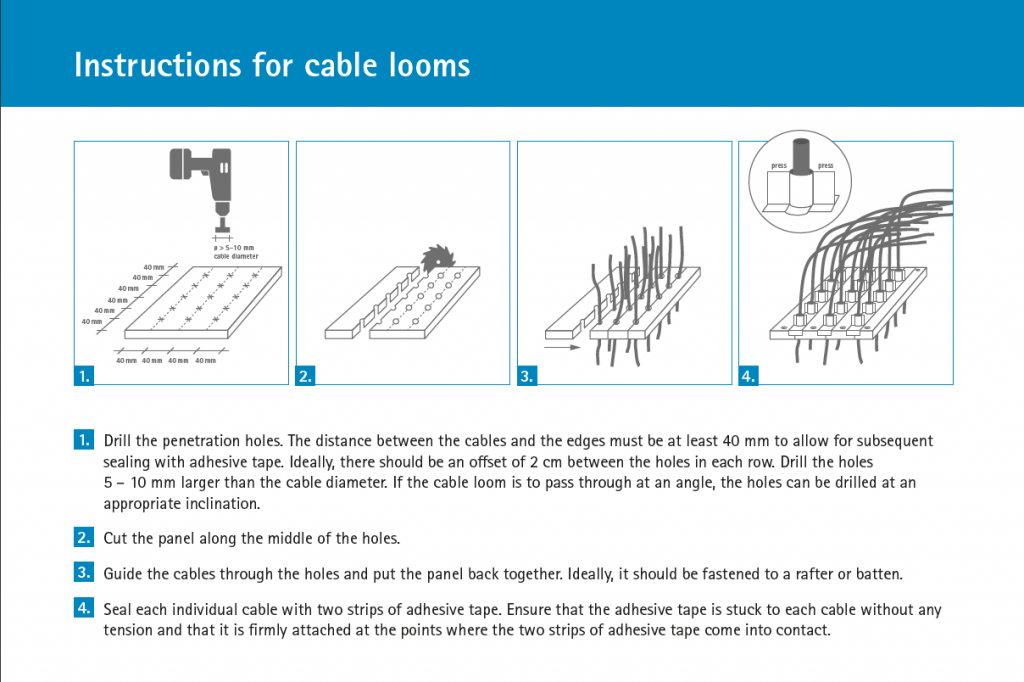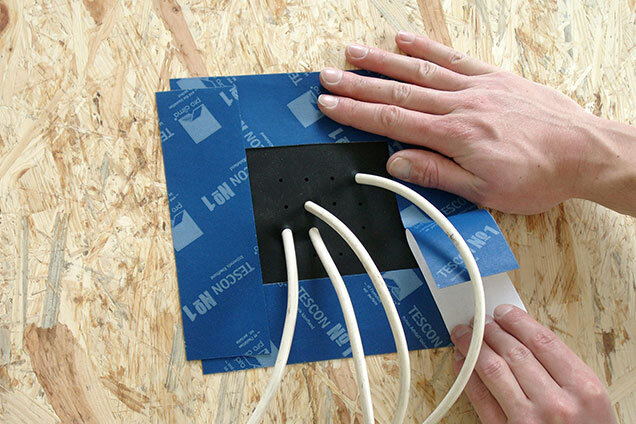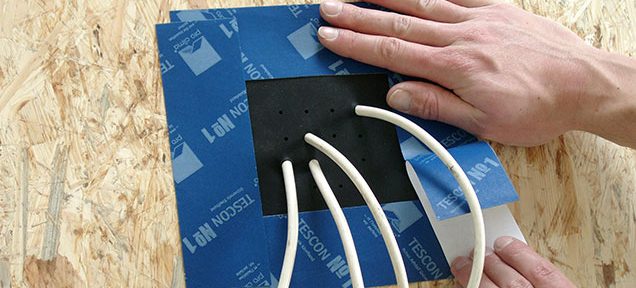Continuation of Part 1: Typical leaks: cable feed-throughs for electrical installations
Penetration by single cables and pipes is relatively easy to solve. If adhesive tape is being used, the following steps have proven themselves in practice: first stick the adhesive tape to the cable, and then to the airtight membrane so that an L-shaped adhesive bond with both sides is formed. If more conduits or cables penetrate the airtight layer, the work needed to create an adhesive joint using adhesive tape or adhesive from a tube will be more laborious. Another disadvantage is that the adhesive comes apart as soon as you pull on it.
This series of articles summarises typical, challenging joint situations and shows how technicians can find practical solutions for these challenges. It also provides an overview of the detail features for which prefabricated solutions are available that allow tradespeople to achieve airtightness in a quick, easy and reliable manner.

If you wish to seal cable looms with adhesive tape in a reliable manner, the cables must be pulled far enough apart so that each individual cable can be sealed. The critical points when using tape to seal cables are the points where the cables come into contact. A reliable solution can be achieved here using a drop of adhesive from a tube. This solution requires space that needs to be planned for in advance. If this space is not available, drilled holes at an angle that converge can help to bring the cables together.
To attach a number of penetrating cables in a reliable manner, the following procedure has proven itself in practice (see instructions for cable looms): take an airtight wood-based panel, drill the required number of holes in this panel and cut the panel along these holes. You now bring the panel parts together around the cables and will have enough space to seal these with adhesive tape.

It is easier and quicker to work with prefabricated grommets that also allow for a certain amount of subsequent movement of the pipes and cables. These grommets are fitted onto the cables or pipes. An elastic sealing material closes off the penetration in an airtight manner. In a second step, the grommets are then stuck to the airtight layer. However, the grommets always have to be installed at the same time as the pipe or cable – and this calls for good coordination of construction steps. If the cables to be installed are very long, it may be laborious in certain cases to pull them through the grommets. There is also a risk that grommets will be damaged by rough handling when pulling pipes or cables through them.

This Series was wirtten by Jens Lüder Herms and Holger Merkel

Jens Lüder Herms, carpenter and graduate engineer, Export Manager and Application Technology specialist, pro clima Research and Development,, www.proclima.de. He provides insights into his work on Twitter and Instagram.

Holger Merkel, provider of blower door measurement services, speaker at the pro clima Knowledge Lab and instructor for certification courses.. He has documented examples of leaks in his most recent project www.zieht-wie-hechtsupp.de. He also publishes specialist articles on issues such as blower door tests on www.airtight-junkies.de.
